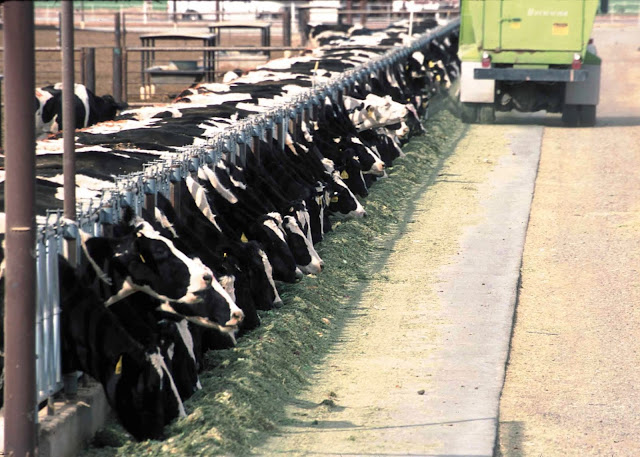Kefir: A Mystical, Potent Probiotic Drink
Keefer. Ka-fear. No matter how you pronounce it, this stuff packs a powerful probiotic punch. Kefir is a fermented milk product rich in enzymes and probiotics, that originated in the Caucasus Mountains. The name Kefir is thought to originate from the Turkish word "Keif" meaning "good feeling", or "pleasure", for the effect that drinking Kefir has on the body. It was once considered a gift from the gods due to its plentiful health-promoting properties.
Kefir can best be described as a liquid, effervescent yogurt, with a distinct tangy, mildly sweet flavor. Due to its unique taste and reputation as a longevity elixir, Kefir is seeing a surge in popularity.
Most of us are aware of the benefits of probiotics, those friendly little bacteria that help keep our gut healthy and happy. Years of eating processed food, a diet high in sugar, pesticide and chlorine exposure, and taking antibiotics, all contribute to a compromised gut flora. Probiotics fight off the "bad bugs" that make us sick, therefore boosting immunity. Other benefits of Kefir include:
- Strengthens and cleanses the digestive system
- Aids in weight loss
- High in calcium, potassium, biotin, and Vitamins A, C, K, D, and B-12
- Regulates metabolism and cholesterol
- Helps controls blood sugar levels and blood pressure
- Strengthens and smooths hair and skin, relieving disorders like acne and eczema
- Helps relieve symptoms of IBS, leaky gut, ulcers, and constipation
- Tolerated well even by those suffering from lactose intolerance, due to the presence of the enzyme lactase
- Helps relieve conditions affected by poor gut flora including ADD and allergies
- Contains high levels of tryptophan, an amino acid which has a soothing effect on the nervous system, helping with sleep disorders, anxiety, and depression
- Improves kidney and liver function
- Has antibacterial and anti-tumor properties; a recent study in the journal "Cancer Management and Research", showed that Kefir effectively prohibited the growth of malignant T-cells
Take a stroll through any supplement aisle, and you will see shelves littered with probiotic supplements. While you can choose to get your probiotics in pill form, experts agree that it is best to obtain any nutrient through whole food consumption. The reason for this is simple. Our bodies recognize real, whole foods, and can use them easily and readily, also known as being bio-available. When we take supplements in pill form, basically we are introducing a foreign, synthetic version of these nutrients and our bodies simply don't know what to do with them, and therefore most of the supplements we take pass through our system unused.
It's clear to see the abundant benefits of the almighty Kefir. Problem is, most of the Kefir you find in stores is made with pasteurized, denatured milk, and the flavored stuff is also loaded with sugar and additives.
The composition of pasteurized milk differs significantly from that of raw milk from pastured cows. You can read my post about the benefits of raw milk and the detriments of pasteurized milk here. Raw milk is a completely balanced live food, teeming with, yep you guessed it, billions of probiotics! It also contains all 20 amino acids and high levels of CLA (conjugated linoleic acid), an intriguing fatty acid. It contains both water and fat soluble vitamins, a broad range of minerals, and 60 functional enzymes, which aid in everything from better digestion, to protection from pathogens.
Pasteurized milk on the other hand, is a processed food that contains additives, preservatives, antibiotics, has no beneficial bacteria, houses high levels of pus and mucus, and a host of other not so pleasant ingredients.
Making your own Kefir is easy and cost effective and I will cover that in another post. The next best thing if you don't have your own Kefir grains is store bought Kefir made with raw milk. I love the Organic Pastures line, and their Kefir is delicious and nutritious. Problem is, my kids aren't in love with plain Kefir. They will drink it, but it's not their favorite, and I don't like forcing my kids to choke down stuff they aren't thrilled about, especially since Kefir is something they have everyday. The solution? Make flavored Kefir at home! I have to tell you, this hardly qualifies as a recipe, but I've had several people ask me how I make my flavored Kefir so I thought it was worth doing a post about. The fun thing is you can mix and match the fruit to your liking, taking cues from the store bought flavors if you wish. We usually do plain strawberry or a mixed berry concoction. Other flavors we have tried and like are; strawberry-banana, strawberry-peach, and blueberry.
As with all things made in your own kitchen, you have full control over the ingredients that go into your food. Making flavored Kefir at home means I get to use healing raw honey, real vanilla, and fresh, organic fruit, plus the added bonus of customizing the flavors to our individual preferences.
Oh and just so you know, it's pronounced "kuh-feer". Just don't blame me if people look at you crazy when you pronounce it this way :)
Raw Strawberry Kefir
1/2 cup raw milk Kefir
1 cup organic strawberries, or other combination of fruit
1-2 Tbs raw honey
1/2 tsp vanilla (optional, but delicious)
ice
Place all ingredients into a high powered blender, such as a Vitamix.
Blend until smooth.
Drink and feel the power of the Kefir!










